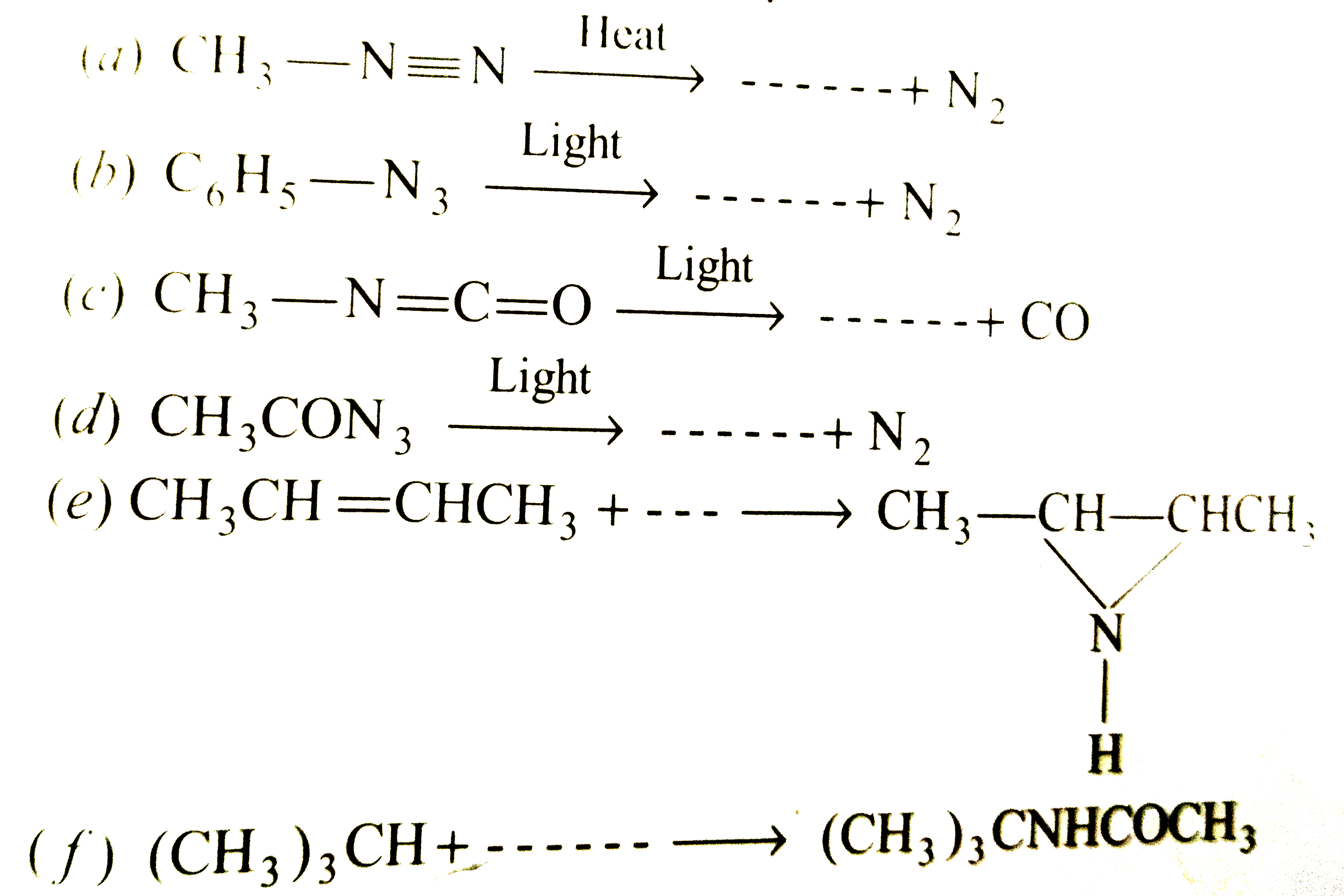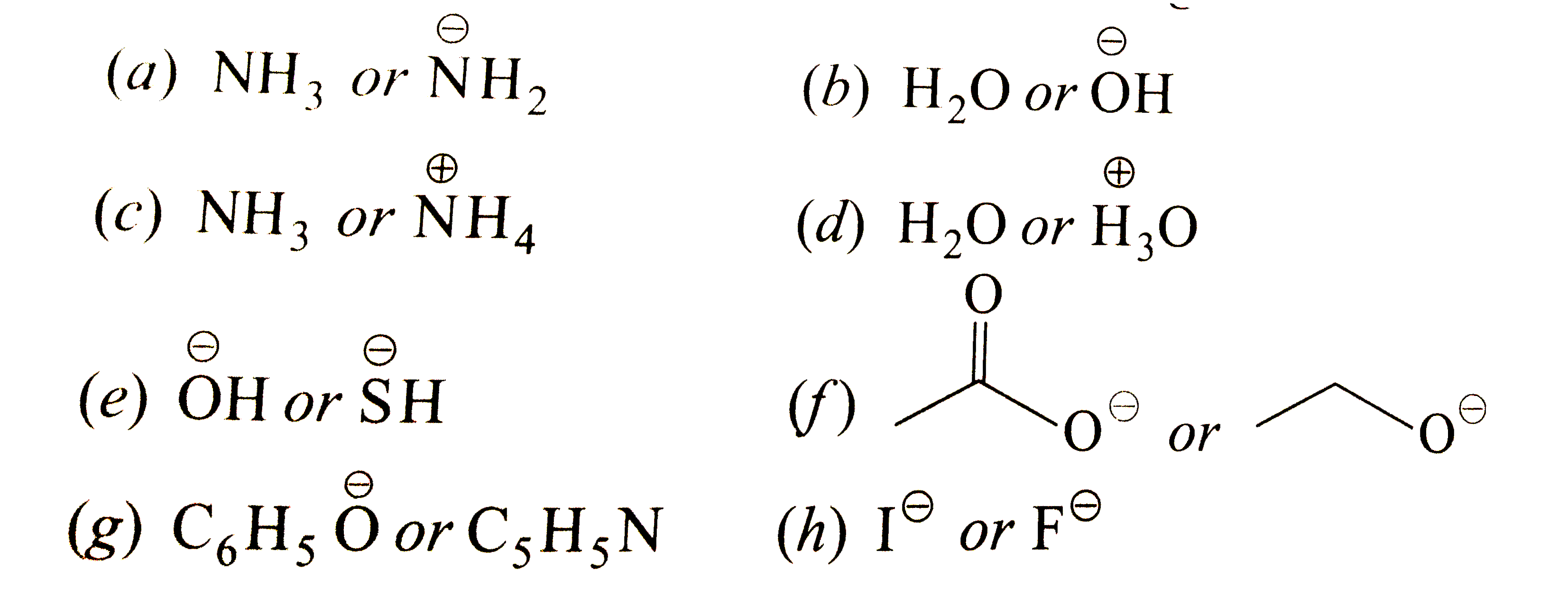Complete Solutions to SOME SOLVED PROBLEMS of chapter BASIC PRINCIPLES OF ORGANIC COMPOUNDS (MECHANISM OF ORGANIC REACTIONS) of Class 12 book with complete answers and questions
| Class 12 | CHEMISTRY |
| Chapter | BASIC PRINCIPLES OF ORGANIC COMPOUNDS (MECHANISM OF ORGANIC REACTIONS) |
| OP TANDON | SOME SOLVED PROBLEMS |
| Number Of Questions | 23 |
| Academic Year | 2023-24 |
Arrange the following groups in order of increasing `+I` effect:
`CH_(3)^(-)," "(CH_(3))_(2)CH^(-)," "(CH_(3))_(3)C^(-)`
View SolutionSelect the most stable carboncation from the following:
`CH_(3)^(+),(CH_(3))_(2)CH^(+),CH_(3)CH_(2)^(+),(CH_(3))_(3)C^(+)`
View SolutionWhat is the major product(s) in each of the following :


View SolutionExplain why alkyl groups act as electron donors when attacted to a `pi-system`.
View SolutionExplain the reaction mechanism of the addition of HBr on acetylene by equations only.
View SolutionExplain the reaction mechanism of the addition of bromine on acetylene by equations only.
View SolutionExplain the reaction mechanism of the following reaction by equations only :
`underset("3-Methylbutan-2-ol 2-Methylbut-2-ene"){:(CH_(3)-CH-CH-CH_(3)overset(H_(2)SO_(4))underset("Heat")rarrCH_(3)-C=CH-CH_(3)),(" | | |"),(" CH"_(3)" OH"" CH"_(3)):}`
View SolutionClassify the following reactions as `S_(N^(1)), S_(N^(2)),E_(1) and E_(2)`:
(i) A first order reaction between an alkyl halide and alkali, to give alcohol, the order in alkali being zero.
(ii) The formation of an olefin from an alkyl halide and alkali, the reaction being first order in each of the reactants.
View SolutionCalculate the pK values of the following organic acids and bases from their given K constants:
(a) `CH_(3)COOH,K_(a)=1.8xx10^(-5)`
(b) `CH_(3)OH,K_(a)=3.1xx10^(-16)`
(c) `CH_(3)NH_(2),K_(b)=4.5xx10^(-4)`
View SolutionExplain that, unlike other amines `(RNH_(2))`, guanidine, `(H_(2)N-underset("NH")underset("|| ")"C "-NH_(2))` , is a strong base.
View Solution3,3-dimethylbutan-2-ol losses a molecule of water in the presence of concentrated sulphuric acid to give tertramethylethylene as a major product. Suggest a suitable mechanism.
View SolutionExplain a possible mechanism for the `S_N1` reaction of `Me_(3)C-Br` and MeOH.
View SolutionSuggest the possible pathways of coverting `(R)-n-C_(3)H_(7)CH(OH)CH_(3)(A)` into its ethyl ether `n-C_(3)H_(7)CH(OC_(2)H_(5))CH_(3)` using Fischer projections and give their R, S designations.
View SolutionExplain the `S_(N^(1))` reaction mechanism of the following by equations only.
`underset("2-Bromo-3-methylbutane 2-Methylbutan-2-ol"){:(" OH"),(" |"),(CH_(3)-CH-CH-CH_(3)-HOHoverset("Hydrolysis")rarrCH_(3)-CH_(2)-C-CH_(3)),(" | | |"),(" Br CH"_(3)" CH"_(3)):}`
View SolutionExplain a suitable mechanism for the following addition of HBr to hexa-2, 4-diene.
View SolutionComplete the following reactions :

View SolutionExplain the mechanism of elimination of the HBr in the given reaction
`CH_(3)CH=CHCH_(2)-overset(Br)overset("| ")(CH)-CH_(2)CH_(2)`
(b) Given the major products following reactions.

View SolutionComplete the following and identify the type for the intertmediate species:

View SolutionComplete the following and identify the type for the intermediate species:


View SolutionChoose the member of each of the following pairs of compounds that is likely to be the stronger base :

View SolutionWrite equations showing ambiphilic nature of the following molecules :

View SolutionWhich one of the following is a batter nucleophile and why?

View SolutionThe decreasing order of basicity of nitrogen in the following compounds is :
(a) `CH_(3)-CH_(2)-NH_(2),C_(6)H_(5)-NH_(2),H_(2)C=CH-NH_(2)`
(b) `(C_(6)H_(5))_(3)N,(C_(6)H_(5))_(2)NH,C_(6)H_(5)NH_(2)`
(c) `H_(2)C=NH,HCN,CH_(3)NH_(2)`
(d) `C_(6)H_(5)NH_(2),C_(6)H_(11)NH_(2),C_(6)H_(5)CONH_(2)`
(e) `C_(5)H_(5)N,C_(4)H_(4)NH,C_(6)H_(5)NH_(2),CH_(3)CONH_(2)`
(f) `C_(6)H_(5)N(CH_(3))_(2),C_(6)H_(3)(CH_(3))_(2)N(CH_(3))_(2),C_(6)H_(5)NH_(2)`
(g) `H_(2)N-C_(6)H_(4)-OCH_(3),C_(6)H_(5)NH_(2),`
`H_(2)N-C_(6)H_(4)-NO_(2),H_(2)N-C_(6)H_(4)-CH_(2)`,
`H_(2)N-C_(6)H_(4)-Cl`
(h) `{:(C_(6)H_(5)-underset("NH")underset("|| ")"C "-NH_(2)", "O_(2)N-C_(6)H_(4)-underset("NH")underset("|| ")"C "-NH_(2)),(Cl-C_(6)H_(4)-underset("NH")underset("|| ")"C "-NH_(2)", "H_(2)N-C_(6)H_(4)-underset("NH")underset("|| ")"C "-NH_(2)):}`
View Solution
SOME SOLVED PROBLEMS questions and complete solutions for chapter BASIC PRINCIPLES OF ORGANIC COMPOUNDS (MECHANISM OF ORGANIC REACTIONS) of G.R. BATHLA & SONS CHEMISTRY (HINGLISH) of Class 12
All Exercises from OP TANDON Class 12 CHEMISTRY BASIC PRINCIPLES OF ORGANIC COMPOUNDS (MECHANISM OF ORGANIC REACTIONS)
- ASSERTION-REASON TYPE QUESTIONS
- BRAIN STORMING PROBLEMS
- ILLUSTRATIONS OF OBJECTIVE QUESTIONS
- MATRIX-MATCH TYPE QUESTIONS
- OBJECTIVE QUESTIONS (Level-A)
- OBJECTIVE QUESTIONS (Level-B)
- PASSAGE-I
- PASSAGE-II
- PASSAGE-III
- PASSAGE-IV
- PASSAGE-V
- PROBLEMS FOR PRACTICE
- SET II
- SINGLE INTEGER ANSWER TYPE QUESTIONS
- SOME SOLVED PROBLEMS